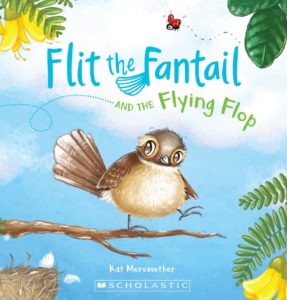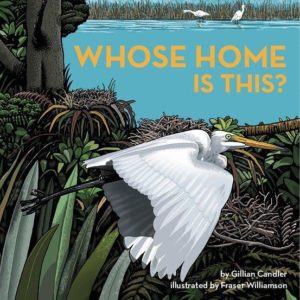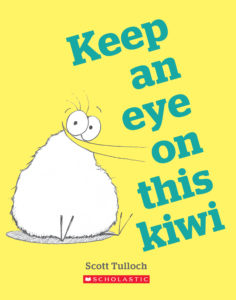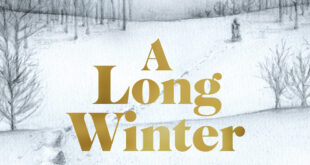Take your pick of three very different books about New Zealand birds to enjoy with your grandchildren: A cute picture book about a baby fantail, an outrageously funny chapter book about a dumb kiwi and an engaging non-fiction book about how creatures build their homes in different places.
 Flit the Fantail and the Flying Flop
Flit the Fantail and the Flying Flop
Kate Mereweather tells a story about Flip, a fantail chick who is almost ready to fly. His parents have told him to stay safe in the nest while they are out finding food for him. But when Flit spots a tasty midge he throws caution to the wind, leans too far over the edge, and falls out. He spreads his wings and flits and floats briefly. Then he falls down with a THUD!
Poor Flit, how can he get back up into the nest? Kiki the kaka chick wants to help. She makes a kaka catapult out of a bendy fern and shoots him back up, but not high enough.
Bit and Bob the rascally robins and Keri the kiwi chick also do their best to help him. But each attempt is a failure. Then wise old ruru suggests they should all work together. Success at last!
Reality check
Of course in real life birds would never team up to help a fantail chick, especially not ruru (our native owl) who is a stealthy predator and would have seen Flit as a tasty morsel!
But no matter as this delightful anthropomorphic story is a good way for pre-schoolers to learn about the importance of teamwork. They will love the alliteration and the brightly coloured illustrations of the different birds.
Flit the Fantail and the Flying Flop has also been published in Maori. I do think it’s a shame there is no bilingual version so that all children can learn some te reo while enjoying the story.
Talking point
What should we do if we find a fantail chick on the ground? It is best to leave it for its mother to find and to feed it there. But if there are cats in the neighbourhood you could hide it in a hedge.
Flit the Fantail and the Flying Flop by Kate Merewether is published by Scholastic. RRP: $17.99
 Whose Home is This?
Whose Home is This?
Gillian Candler’s has created a guessing game about New Zealand creatures in Whose Home is This? Included are six birds: hoihoi the yellow eyed penguin, kea, kotuku the white heron, riroriro the grey warbler, and tuturiwhatu the New Zealand dotterel.
Each builds a nest to lay its eggs and keep its chicks safe in a different environment: high up in a tree, under a bush, in a tree hollow, amongst rocks, sand and stones, on the beach or in a garden.
The detailed colourful illustrations make this book very appealing and a good reference book for budding little naturalists four years and up.
Talking Point
New Zealand was once bird land. Then humans arrived and brought with them predators: cats, dogs, possums, stoats and rats.
But we can help to keep endangered chicks safe by keeping our dog on a leash while walking a beach where dotterels are nesting or where kiwis live in the bush.
Whose Home Is This? By Gillian Candler illustrated by Fraser Williamson is published by Potton and Burton. Paperback: $14.99 hardback $24.99
 Keep an Eye on this Kiwi
Keep an Eye on this Kiwi
Scott Tulloch’s Keep an Eye on this Kiwi is a hilarious and irreverent very tale about our national icon which is bound to hit the spot with any little kids and GrownUps who have a whacky sense of humour.
Dumb-dumb kiwi is out hunting for huhu grubs. When they hear him coming they spring into action and paint themselves brown. They manage to fool him into thinking that they are not huhu grubs at all but soft and squishy dogs’ poos (disgusting!) so he leaves them alone.
Dumb-dumb kiwi carries on hunting. He smells worms. But the worms quickly camouflage themselves with orange paint to look like spaghetti.
Spaghetti is bad for kiwis they tell him, it will fill him with gas and make him fart and that would be very embarrassing! Kiwi believes them and walks away.
I’d better not do a spoiler and reveal the rest of this outrageous tale, except to say that there is a mighty farty kaboom !!!! ahead and dumb dumb kiwi will become the world’s first flying (and completely wind powered and environmentally friendly) kiwi.
It’s a very short chapter book with plenty of quirky black and white drawings. For reading out loud, or for primary school children to read on their own.
Reality Check
Are kiwis dumb birds? By human standards, they are not as smart as kea who can solve puzzles. And they can’t see very well.
But they are smart in other ways. Not only is a kiwi the only bird in the world with external nostrils at the tip of its long beak and can smell very well. But recent research suggests that it also has sensory pits at the tip of its beak with which it can sense prey like worms moving underground.
Talking Point
Have a brainstorm about what else kiwis might catch and eat apart from worms and huhu grubs (bear in mind that they have a great sense of smell and make use of their long beak. But they can’t fly and have no teeth). Use this fact sheet to check your answers. You may be in for some surprises. For instance did you guess that kiwis sometimes eat frogs?
Keep an Eye on This Kiwi by Scott Tulloch is published by Scholastic. RRP: $10.99
Reviews by Lyn Potter
Parent and grandparent, Avid traveler, writer & passionate home cook










Join the Discussion
Type out your comment here:
You must be logged in to post a comment.